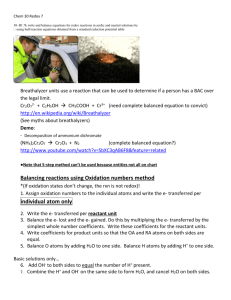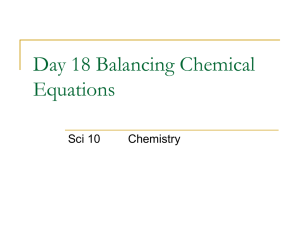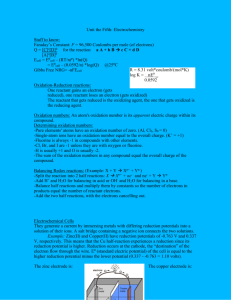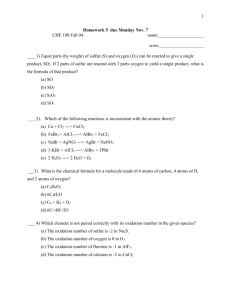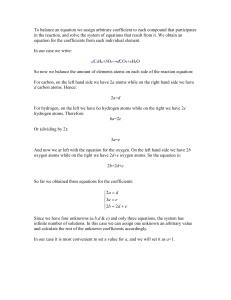BALANCING REDOX EQUATIONS
advertisement
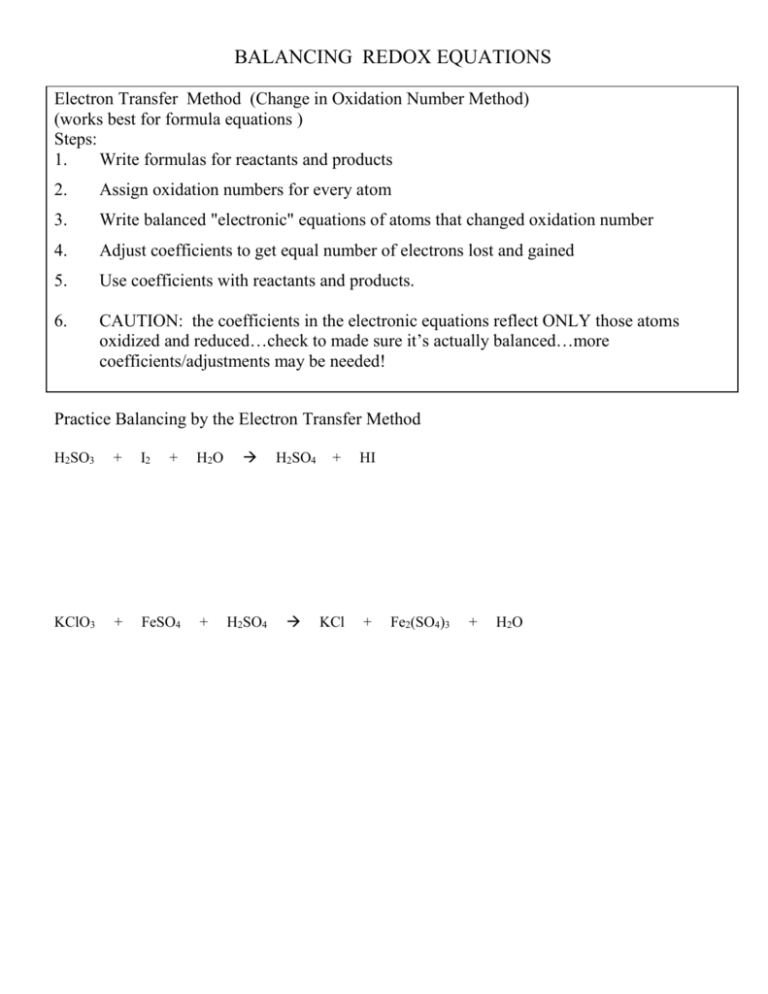
BALANCING REDOX EQUATIONS Electron Transfer Method (Change in Oxidation Number Method) (works best for formula equations ) Steps: 1. Write formulas for reactants and products 2. Assign oxidation numbers for every atom 3. Write balanced "electronic" equations of atoms that changed oxidation number 4. Adjust coefficients to get equal number of electrons lost and gained 5. Use coefficients with reactants and products. 6. CAUTION: the coefficients in the electronic equations reflect ONLY those atoms oxidized and reduced…check to made sure it’s actually balanced…more coefficients/adjustments may be needed! Practice Balancing by the Electron Transfer Method H2SO3 + I2 + KClO3 + FeSO4 H 2O + H2SO4 H2SO4 + HI KCl + Fe2(SO4)3 + H2O Ag2S + HNO3 AgNO3 + NO + S + H2O Half Reaction Method (works best for ionic reactions) Steps: 1. Write formulas if necessary and assign oxidation numbers 2. Break equation into an oxidation equation and a reduction equation (half reactions) 3. Balance both reactions for all atoms except O and H 4. Balance both reactions for O by adding H2O to the side with less O Balance both reactions for H by adding H+1 to the side with less H 5. Balance both reactions for charge by adding electrons to the side with the greater positive charge 6. Adjust coefficients in the balanced half reactions to get the number of electrons lost equal to the number of electrons gained 7. Add the two half reactions and cancel electrons and other species that appear on both sides of the equation 8. IF the reaction is in a basic solution add hydroxide ions to both sides of the equation to neutralize the hydrogen ions. Practice Balancing by the Half Reaction Method Cr2O7-2(aq) + Cl-1(aq) Cr+3(aq) + Cl2(aq) ClO-1(aq) + Cr(OH)4-1(aq) CrO4-2(aq) + Cl-1(aq) in acid solution basic solution


